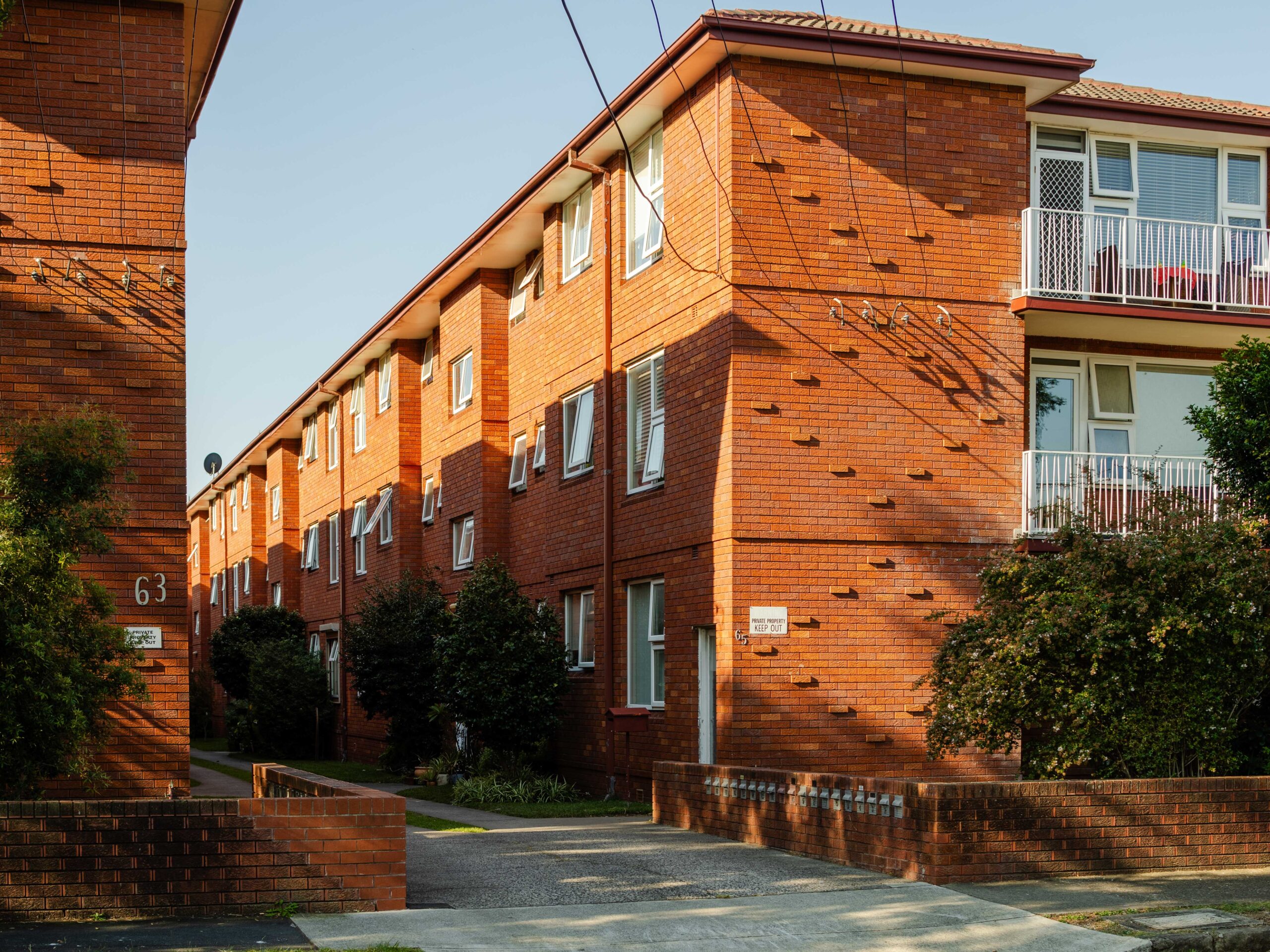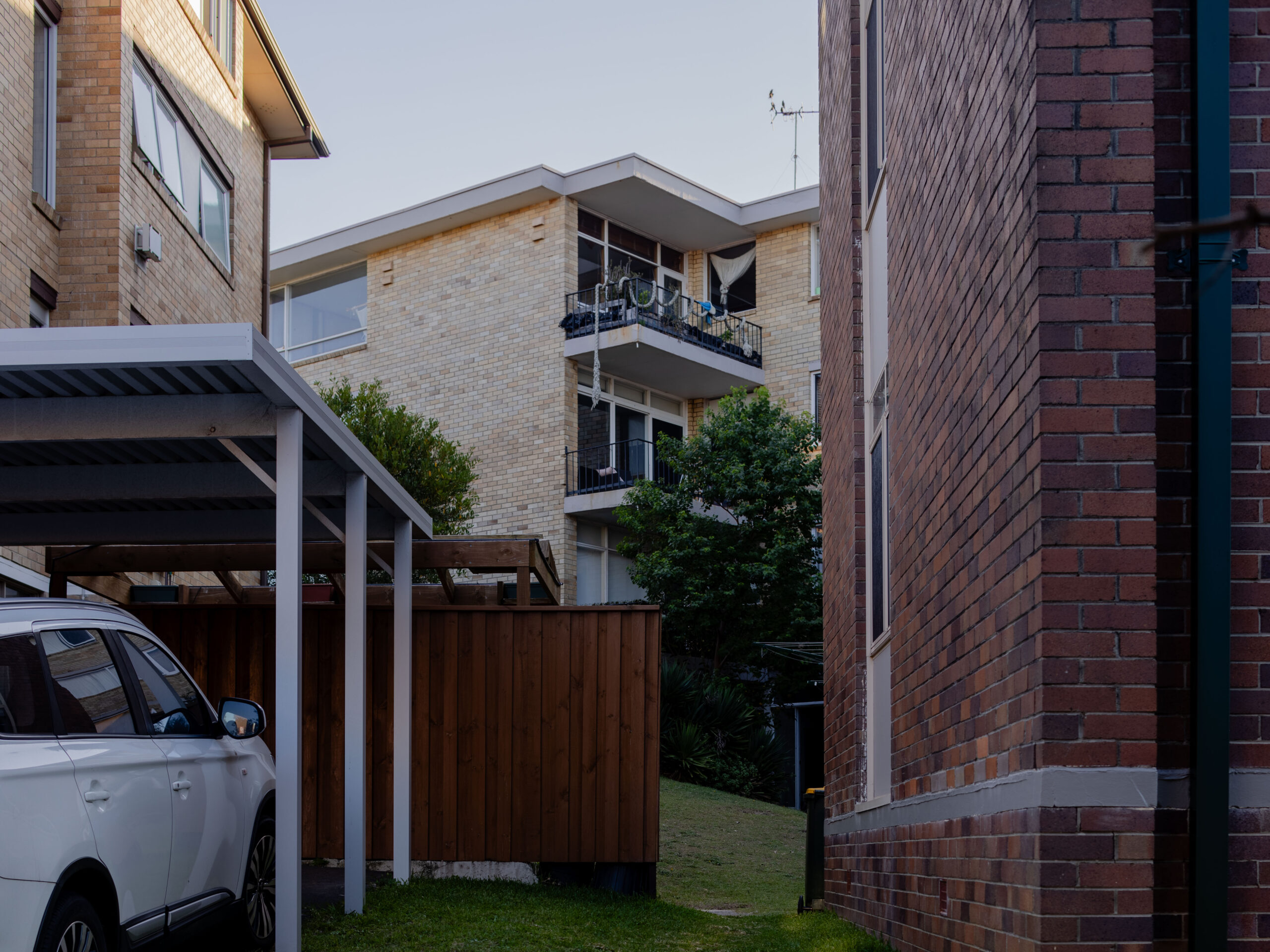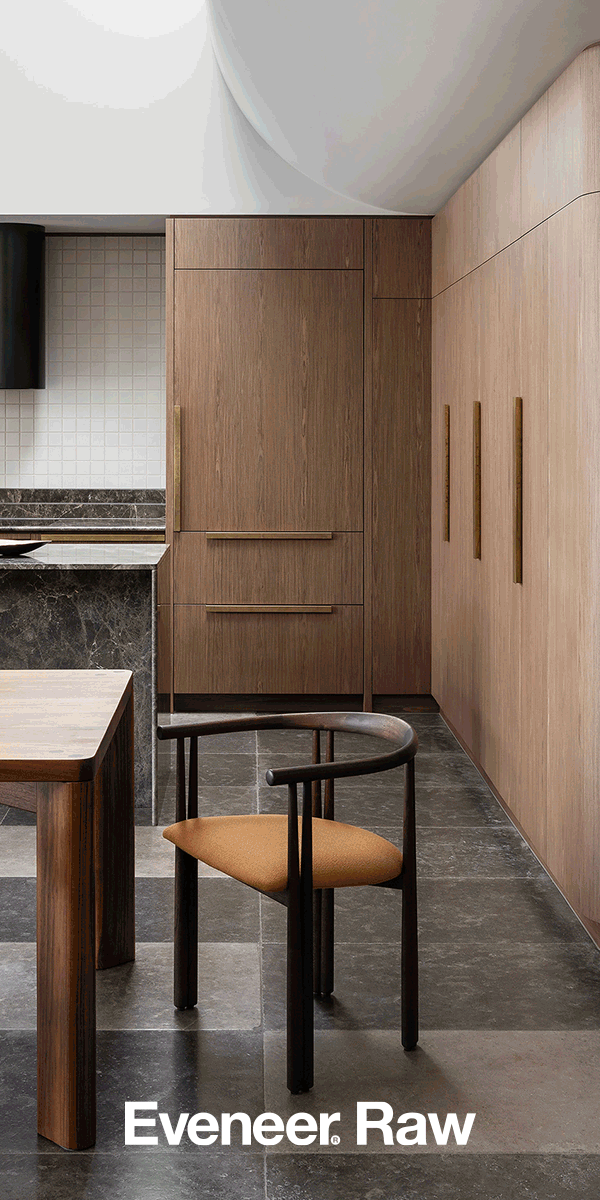Kate Goodwin catches up with architectural practitioner, advocate and Palawa woman Sarah Lynn Rees – recipient of the Australian Institute of...
Regular Plans and Interesting Arrangements
The ways people live together, relate to each other, share common spaces, and resolve disputes in multi-title buildings illustrate the 'mechanics' of communal living, an element starkly missing in the aggressively efficient, double-loaded contemporary apartment buildings driven by the speculative market.
Essay
Kieran Joseph Patrick

Warren Road, Marrickville. Photo: Liam Patrick
Sydney is a city of free-standing homes.[1] The prevalence of private car ownership and the abundance of stolen land drove Sydney's suburban sprawl, resulting in low-rise residential zoning, varying levels of urban density, and a lack of contemporary apartment types dominating the cityscape.[2]
The current crisis of housing supply and diversity has already occurred and been fixed twice: once during the interwar period between 1918 and 1945 and again during the post-war period, when some very good apartment buildings were built.[3]
In the 1960s, these apartment buildings were mostly four-pack apartments, which consisted of four apartments with four to five rooms in each, similarly constructed to the common brick bungalows of the time.[4] These free-standing houses coexisted with suburban red-brick apartment buildings. Both housing types emerged in response to the post-war desire for property ownership.[5] To emphasise their connection to traditional homes, apartments available for purchase were referred to as 'home units'.
Often designed without architects, both of these typologies were built before any complex development controls were implemented and domestic air conditioning systems were introduced.[6] Today, this has resulted in narrow buildings and shallow apartments that are all cross-ventilated.
As these buildings were not designed complexly, they were at less risk of serious defects or material failure. The absence of sophisticated apartment design objectives also meant that these buildings were often built very close together. With the three case studies below, we will see that this, however, is not necessarily an issue.
The phrase ‘building ensemble’ will be used to discuss groups of buildings that sit very closely together. They might sit in a row and share a driveway or meet closely at the rear under the shade of a large tree.
An additional note about these buildings is their size, often ranging from 4 to 16 apartments each. The buildings are relatively small and so the owners' corporations of each building are generally less complicated governing entities. This is very important and relates directly to the architecture of the buildings.
Warren Road, Marickville
Around the corner from Marrickville train station in Sydney’s inner west, there are two identical three-story walk-up apartment buildings. One was built in 1967 and the other a year later. Each building shares a space in between, primarily for access by vehicles and pedestrians. The front lawn of these buildings continues into this central space with two strips of concrete for cars, along with a few small trees and flower beds. Children play in between the buildings. Neighbours chat in the driveway, and the lawns are well maintained. To some, these buildings are a little bit too close for comfort, with about six metres between them.
The internal layout controls the closeness, as only the kitchens and dining rooms of each apartment face the central area. Each of these rooms has some variety of sheer or vertical blinds to manage light and provide privacy. The living rooms and bedrooms are made private with an internal corridor and face the opposite direction.

Todman Avenue, Kensington
There is a line of houses along Todman Avenue in the suburb of Kensington that were built in the 1930s for the workers of the nearby ACI glass factory. Each building contains four two-bedroom apartments. The plans are compact, the buildings are in good shape and the ornamental brickwork is varied and impressive. An absence of side fences between each lot has allowed each building to expand its rear garden space into a large common park shared between twelve buildings. This space is loosely organised with outdoor furniture, washing lines and children’s play equipment. There are no signs of demarcation.
The owners of each building have agreed to this conjoined arrangement and are committed to sharing common space. The arrangement of the buildings to the north softens the traffic noise from the eastern distributor, while the tightness between each building maintains an important spatial distinction from the street. The kitchens of each apartment face out into this garden, creating an interface with private interiors and affirming this space as rightfully communal.

Broome Street, Maroubra
At the corner of Broome and Brown Street, on the Malabar headland at Maroubra, there is a tight ensemble of three buildings, each built towards the end of the 1960s. These buildings contain a mix of two- and three-bedroom apartments of different configurations, many with views of the ocean and headland. The seemingly incidental arrangement of these buildings formed into each block of land has left an irregular pentagon-shaped space in between. This configuration manages the closeness of these buildings; none of the apartments face directly into each other.
The apartments that face away from the ocean benefit as the sea breeze can move between each building and the remaining space at the ground is not partitioned by fences. Trees and shrubs have grown over the property boundaries, with narrow footpaths leading from each building to the shared clotheslines. It is not unlikely that neighbours have come to know each other well while hanging out laundry.

The apartment types outlined in this article borrow from the construction logic and imagery of existing free-standing homes in the suburbs.
The ways people live together, relate to each other, share common spaces, and resolve disputes in multi-title buildings illustrate the 'mechanics' of communal living, an element starkly missing in the aggressively efficient, double-loaded contemporary apartment buildings driven by the speculative market. As such, Sydney, like all other Australian cities, urgently needs new images of contemporary apartment typologies. However, for this to be successful, we must rethink and redefine the forms of housing that are necessary.
[1] As per the 2022 ABS census data, 53.4% of homes in the Greater Sydney region are defined as ‘separate homes', which is defined ‘as all free-standing dwellings separated from neighbouring dwellings (Profile.id., n.d.). Dwellings in Australia. Retrieved from https://profile.id.com.au/australia/dwellings?WebID=260&EndYear=1991&DataType=EN
[2] The Ford model T arrived in Australia in 1908, and by 1927, one in four Australians owned a car. Within a matter of decades, the family car and the standalone house had solidified as the primary symbols of middle-class Australian prosperity.
[3] It is the view of the author that the majority of apartment buildings built within the last 30 years are not very good.
[4]The demand for worker housing prompted the use of pattern book designs for the development of a standard building type. These were Sydney's first mass-produced form of speculative multi-residential housing. Often built tightly clustered in a row or together in a cul-de-sac close to a tramstop.
[5] Once Australia’s predominant and preferred lifestyle choice had been cemented, a new building typology would appear. The ruthless efficiency of the Red-brick apartment building emerged as . In a matter of years, entire suburbs were transformed by unadorned masses of double brick. The architecture is often devoid of ornament and offers very little back to the street; instead, the ground plane is dedicated to the private motor vehicle.
[6] Many local governments had basic development controls or various Ordinances which made various building controls. The predecessor of the NSW Apartment Design Guide was titled The ‘Randwick General Policy for Control of the Sitting, Design and Erection of Residential Flat Buildings; Domestic air conditioning units had become available in Australia during the 1960s, but it was not until the 1970s that they became widely used.
Kieran Patrick is a graduate of the UTS School of Architecture. He is currently working at one of Australia’s largest property development groups on the feasibility, acquisitions and design development of multi-residential buildings. He is interested in the relationship between housing supply, urban form, and domestic space.

Todman Avenue, Kensington. Photo: Liam Patrick

Broome Street, Maroubra. Photo: Liam Patrick

